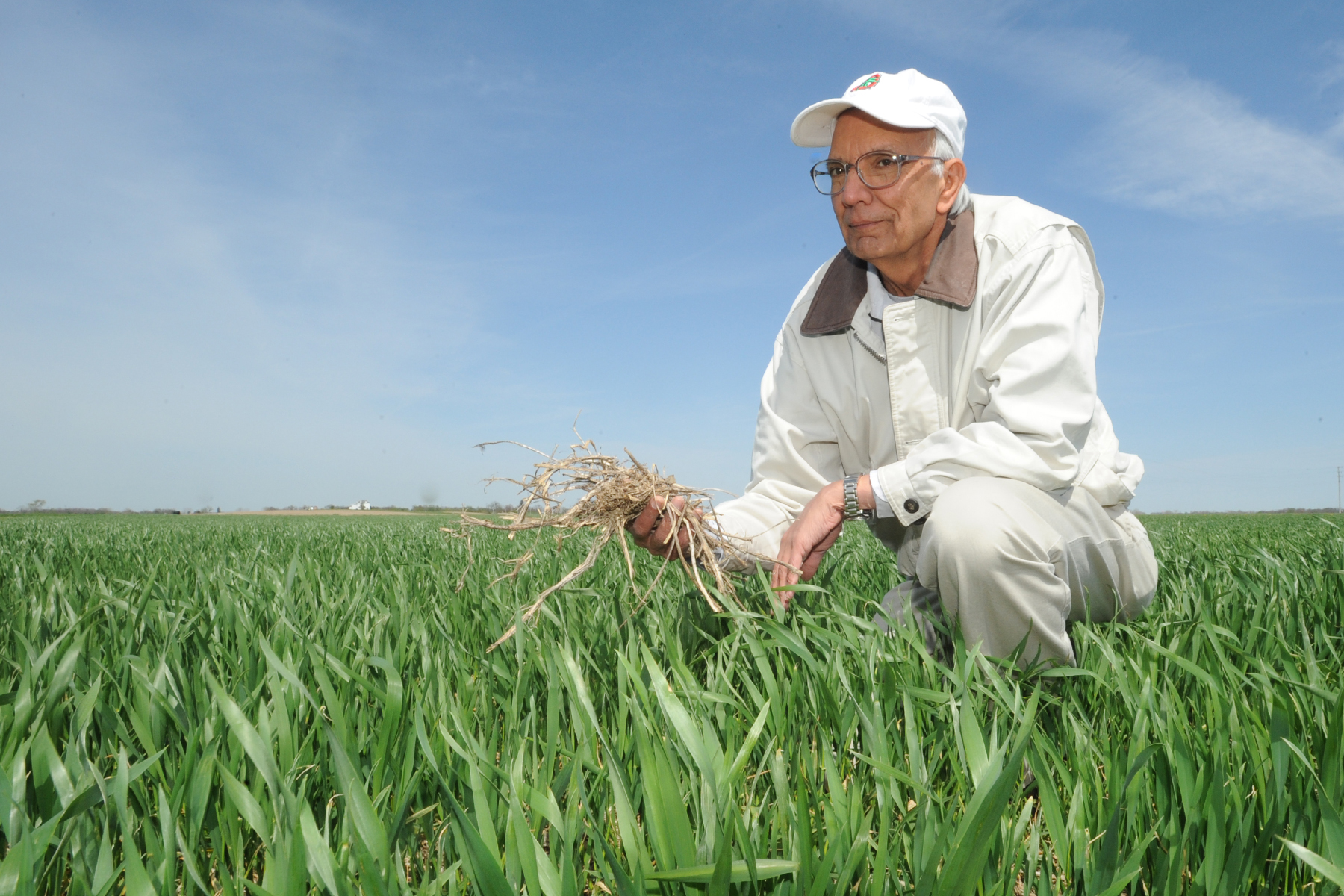Rattan Lal, Distinguished University Professor of Soil Science at The Ohio State University, explains how improving soil health and conservation agriculture methods can help advance the Sustainable Development Goals (SDGs).
Between 1961 and 2019, global population increased from 3.1 to 7.7 billion, cereal production from 880 to 2,900 million tons, and per capita cereal production from 284 to 376 kg. This uniquely impressive agronomic accomplishment – widely known as the “Borlaug Effect” – saved hundreds of millions from starvation.
This agricultural intensification was driven by a global increase in the use of nitrogen fertilizer, phosphorous, potash, irrigated land area and water withdrawal, along with the horizontal expansion of agro-ecosystem land area and cropland area. Agricultural scientists ushered in the Green Revolution, and more food is now produced than is required to feed the world population.

Dr. Rattan Lal, Professor, SENR, CFAES, OSU
But agriculture has reached a crossroads, between meeting the needs of an ever-growing world population and protecting our environment. So, now is the time to drive sustainable agriculture and soil management as a means of advancing the Sustainable Development Goals (SDGs).
The power of soil
The health of soil, plants, animals, people and the environment is one and indivisible. The strategy of restoring soils therefore has numerous benefits, especially in advancing the SDGs.
For instance, sequestration of CO2 in soil as organic and inorganic carbon – also called “carbon farming” – enables soil carbon stock to be traded as a farm commodity, just like corn, soybean, meat or milk. Carbon sequestration can also be rewarded by payments for ecosystem services.
Increasing soil carbon stock is also essential to achieving global food and nutrition security. Not only can it enhance food production in developing countries, it can help improve nutritional quality – especially with protein and essential micronutrients like iron, zinc and selenium.
Conservation agriculture
Carbon sequestration, through conservation agriculture (no-till farming with mulch and cover cropping), also helps to filter pollutants, renew fresh water supplies, increase plant-available water capacity, moderate soil temperature and improve soil resilience against agronomic droughts. Adopting such conservation agriculture approaches can therefore help make soil and agro-ecosystems more climate-resilient, as well being a cost-effective approach to reducing agriculture’s carbon footprint.
Plus, the restoration of degraded soils and adoption of systematic conservation agriculture – along with integration of crops with trees and livestock – can also help achieve land degradation neutrality as promoted by UNCCD.

Rattan Lal in his lab.
Less is more
Rather than horizontally expanding, eco-intensification requires enhancing input effectiveness by producing more from less. For example, 700 million hectares of land is currently used for cereal production. Yet by narrowing the yield gap, this could viably be reduced to 500 million hectares.
Reducing food loss is also crucial. Around 30 per cent of global annual production is wasted, with one billion tons of food grains never reaching the stomachs of people or livestock. Together, we need to improve how we produce, store, process, package, transport, cook, consume and dispose of agricultural products.
We cannot forget that soil is a living entity. It is the only site in the universe where death is resurrected into life. Soil, water and air are three inter-related components of nature, so to achieve clean water and air, we must take care of our soil.



